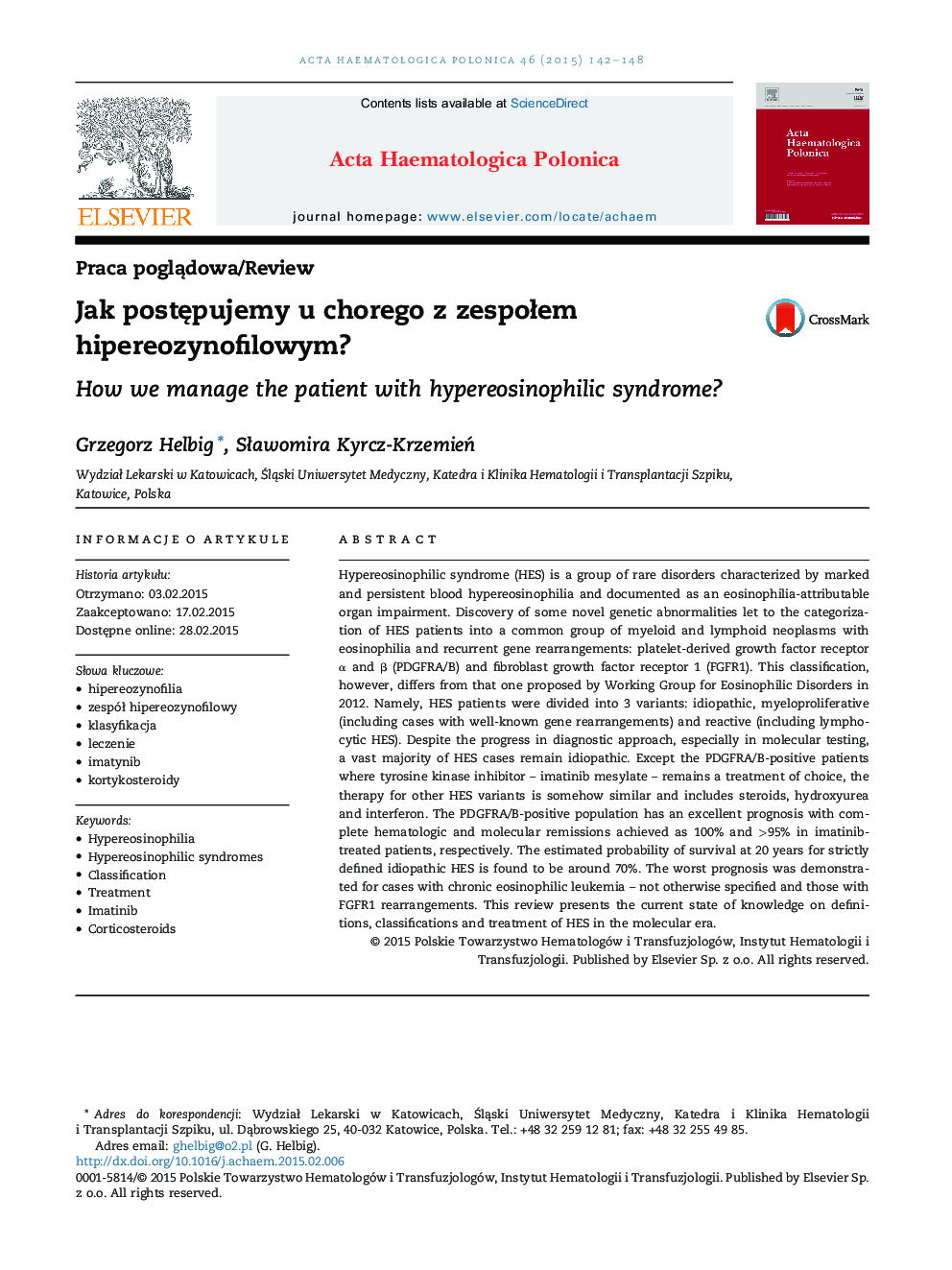| کد مقاله | کد نشریه | سال انتشار | مقاله انگلیسی | نسخه تمام متن |
|---|---|---|---|---|
| 3328119 | 1212297 | 2015 | 7 صفحه PDF | دانلود رایگان |
Hypereosinophilic syndrome (HES) is a group of rare disorders characterized by marked and persistent blood hypereosinophilia and documented as an eosinophilia-attributable organ impairment. Discovery of some novel genetic abnormalities let to the categorization of HES patients into a common group of myeloid and lymphoid neoplasms with eosinophilia and recurrent gene rearrangements: platelet-derived growth factor receptor α and β (PDGFRA/B) and fibroblast growth factor receptor 1 (FGFR1). This classification, however, differs from that one proposed by Working Group for Eosinophilic Disorders in 2012. Namely, HES patients were divided into 3 variants: idiopathic, myeloproliferative (including cases with well-known gene rearrangements) and reactive (including lymphocytic HES). Despite the progress in diagnostic approach, especially in molecular testing, a vast majority of HES cases remain idiopathic. Except the PDGFRA/B-positive patients where tyrosine kinase inhibitor – imatinib mesylate – remains a treatment of choice, the therapy for other HES variants is somehow similar and includes steroids, hydroxyurea and interferon. The PDGFRA/B-positive population has an excellent prognosis with complete hematologic and molecular remissions achieved as 100% and >95% in imatinib-treated patients, respectively. The estimated probability of survival at 20 years for strictly defined idiopathic HES is found to be around 70%. The worst prognosis was demonstrated for cases with chronic eosinophilic leukemia – not otherwise specified and those with FGFR1 rearrangements. This review presents the current state of knowledge on definitions, classifications and treatment of HES in the molecular era.
Journal: Acta Haematologica Polonica - Volume 46, Issue 2, April 2015, Pages 142–148
